Hampi, a UNESCO World Heritage Site, boasts numerous architectural marvels. Among these is the Nandi, or monolithic bull, locally known as Yeduru Basavanna, believed to be the devoted vehicle and gatekeeper of Lord Shiva. Its symbolic significance is heightened by its facing of the Virupaksha Temple, located at the opposite end of the street, approximately 700 meters away.[1]
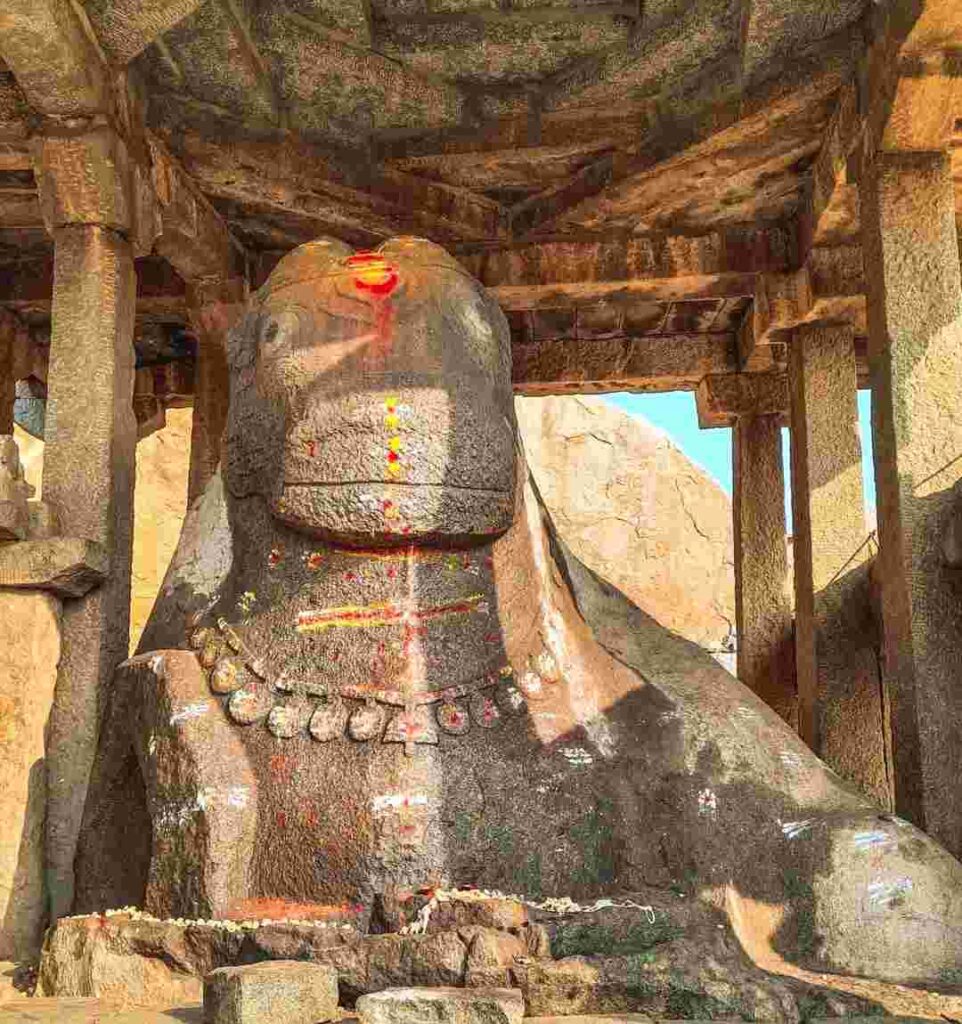
Table of Contents:-
The Nandi Bull is more than just a sculpture; it’s a symbol of unwavering devotion and a testament to the artistic excellence of the Vijayanagara Empire. A visit to Hampi is incomplete without witnessing the grandeur and historical significance of this captivating landmark.
Whether you are planning a visit to Hampi or simply seeking to deepen your knowledge of this iconic sculpture, this guide will serve as a valuable resource. From understanding the spiritual significance of the Nandi Bull to learning about its architectural marvel, delve into the intriguing aspects surrounding this captivating symbol of devotion and artistic excellence.
Quick Facts
- Timing: 06:00 AM to 06:00 PM
- Entry Fee: No entry fee required
- Photography: Allowed
- Location: Google Maps
- Must-see Things
Monolithic Masterpiece: Nandi’s Artistry
The Nandi Bull is not just impressive in size, but also a remarkable feat of monolithic architecture. Carved from a single massive block of granite, it stands tall and majestic on a raised platform within a two-story pavilion. It’s one of the largest monolithic Nandi statues in India. The intricate details on the Nandi’s body, especially the serene expression on its face, showcase the exceptional craftsmanship of the era.
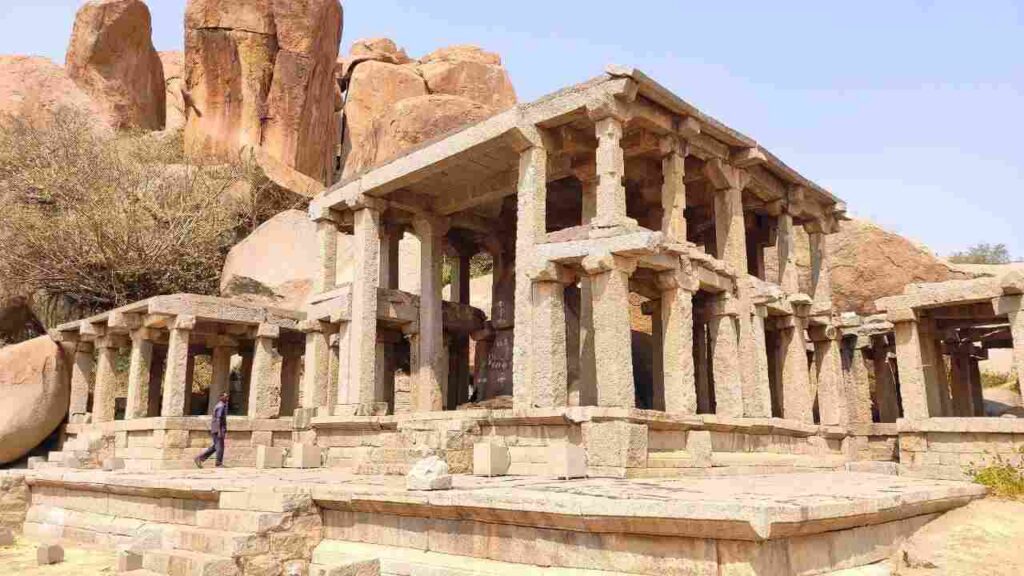
Monolithic Nandi History
The exact date of construction for the Nandi Bull remains shrouded in some mystery. Historians and archaeologists haven’t been able to pinpoint a definitive year, but through stylistic comparisons and inscriptions found on other Vijayanagara era monuments in Hampi, they believe it was built sometime during the 14th to 16th centuries.
This timeframe coincides with the reign of the powerful Vijayanagara Empire, known for its patronage of arts and architecture. The impressive scale and intricate details of the Nandi Bull further support this attribution, as these characteristics are hallmarks of Vijayanagara craftsmanship. So, while the exact date might be elusive, the Nandi Bull undoubtedly stands as a testament to the artistic legacy of this glorious empire.
Must-see attractions at the Monolithic Bull (Nandi)
Explore the must-see sights at the Monolithic Bull, also known as Nandi. From its impressive stature to the fascinating surroundings, discover the top attractions that make a visit to this iconic sculpture truly memorable.
The Monolithic Bull itself:
This massive statue carved from a single black granite boulder is the main attraction. Admire its size, intricate details (though some have been weathered), and its historical significance.
Two-Story Pavilion:
The bull is housed within a unique two-story pavilion, showcasing intricate architectural details that complement the statue’s grandeur. Take a moment to admire the design and craftsmanship of this remarkable structure, which adds to the overall ambiance of the site.
Surrounding Boulders and Rock Pillars:
The area surrounding the Nandi statue features large boulders and rock pillars, adding to the natural and historical ambiance.
Views of the Virupaksha Temple:
Due to its positioning, you can get a good view of the Virupaksha Temple Gopuram (tower) from near the Nandi statue.
Hampi Bazaar:
The eastern end of the Hampi Bazaar is located right next to the Nandi statue. This stone-paved street measures 750meters in length and 30 meters in width and is flanked by single and double-storey mantapas, It is believed this bazaar was also a market place for pearls and gems. Here you can explore the small shops and stalls selling souvenirs and local crafts after appreciating the historical significance of the bull.
Story of Nandi
Delve into the captivating tale behind the revered bull deity, Nandi. From its mythological origins to its significance in Hinduism, this exploration offers insights into the rich cultural and religious heritage surrounding this beloved figure. Dive into the fascinating narrative of Nandi and uncover the timeless wisdom it embodies.
Birth of Nandi:
In ancient stories, Nandi’s birth began with sage Shilada’s wish for an immortal child. After rigorous prayers and penance, Lord Indra suggested he seek Lord Shiva’s blessings. With great devotion, Shilada performed a holy ceremony, and as a result, Lord Shiva blessed him with Nandi, who emerged from the sacred fire.
Permanent residence with Shiva:
Through dedicated penance lasting thousands of years, Nandi earned Lord Shiva’s favor. Expressing his deep desire to eternally serve Shiva, Nandi’s devotion impressed the deity, who granted him the privilege of being Shiva’s constant companion.
Numerous legends highlight Nandi’s unwavering dedication to Shiva. One such tale recounts Nandi’s refusal to allow anyone, including the formidable demon king Ravana, to enter Shiva’s abode without permission. This steadfast loyalty exemplifies Nandi’s deep devotion and commitment to his master.
The human form of Nandi:
Nandi is usually shown as half-man and half-bull. However, there are tales of him appearing in human form too. According to some versions of his story, Nandi was once a boy named Nandikeshwara who Lord Shiva turned into a bull.[2]
Symbolism and Significance:
Nandi is commonly depicted as a white bull with a muscular physique and a gentle demeanor. In Hindu temple architecture, particularly those dedicated to Shiva, Nandi holds a prominent place. Positioned facing the main deity’s sanctum, Nandi signifies the devotee’s readiness to receive divine teachings and blessings. His presence not only serves as a reminder of loyalty and devotion but also inspires worshippers to embody these virtues in their spiritual journey.
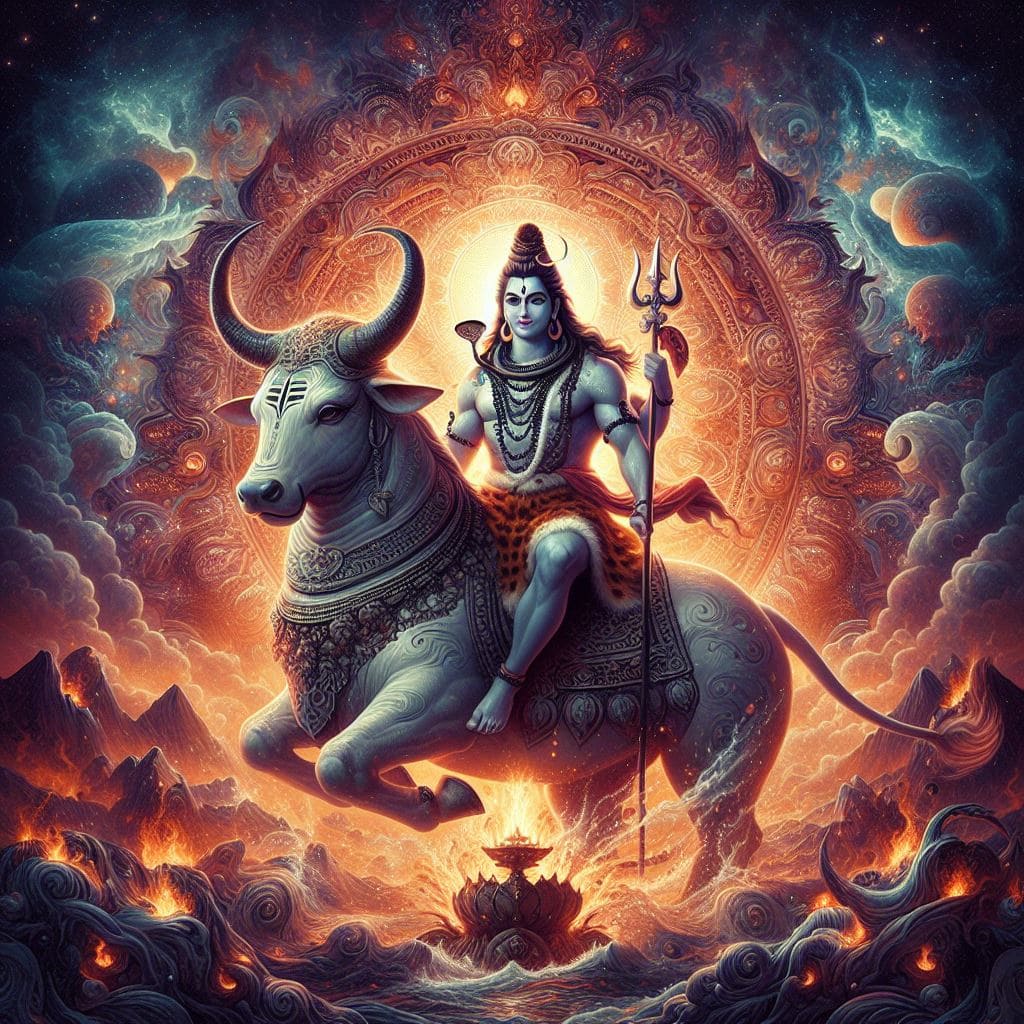
Gallery:-
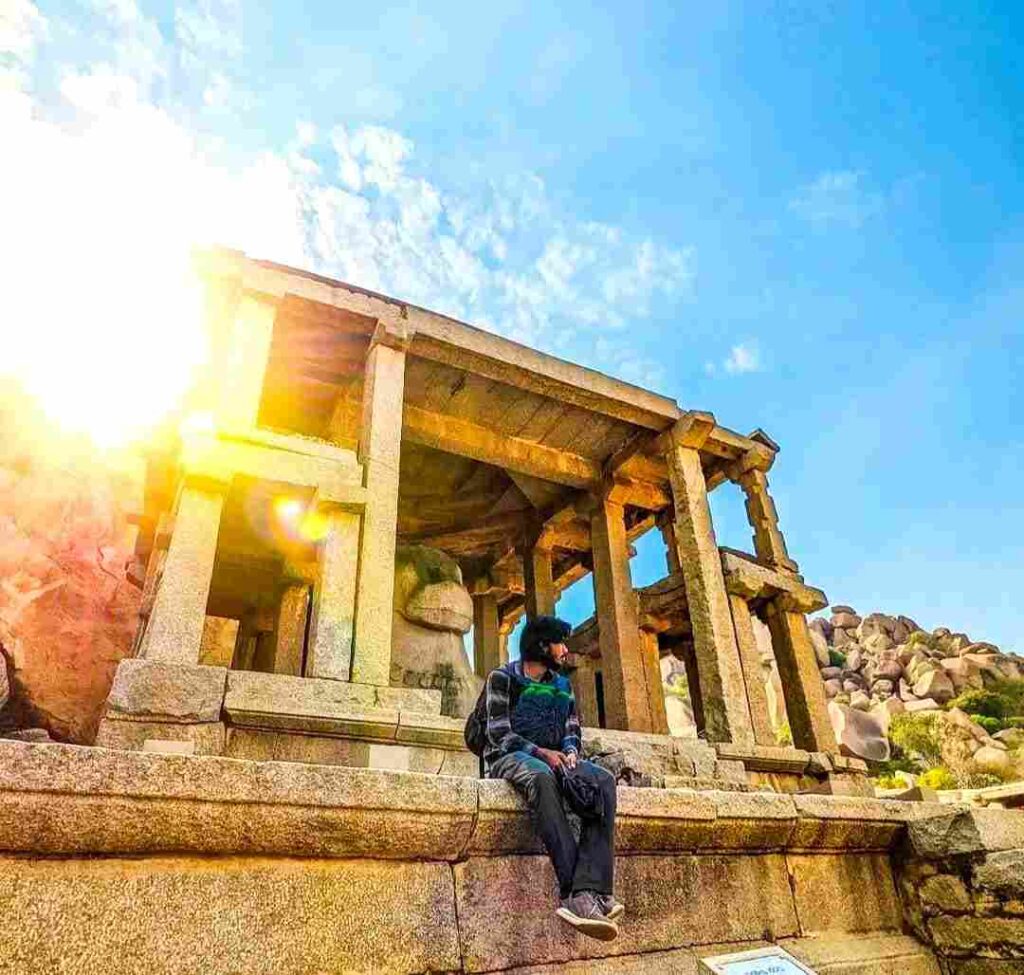
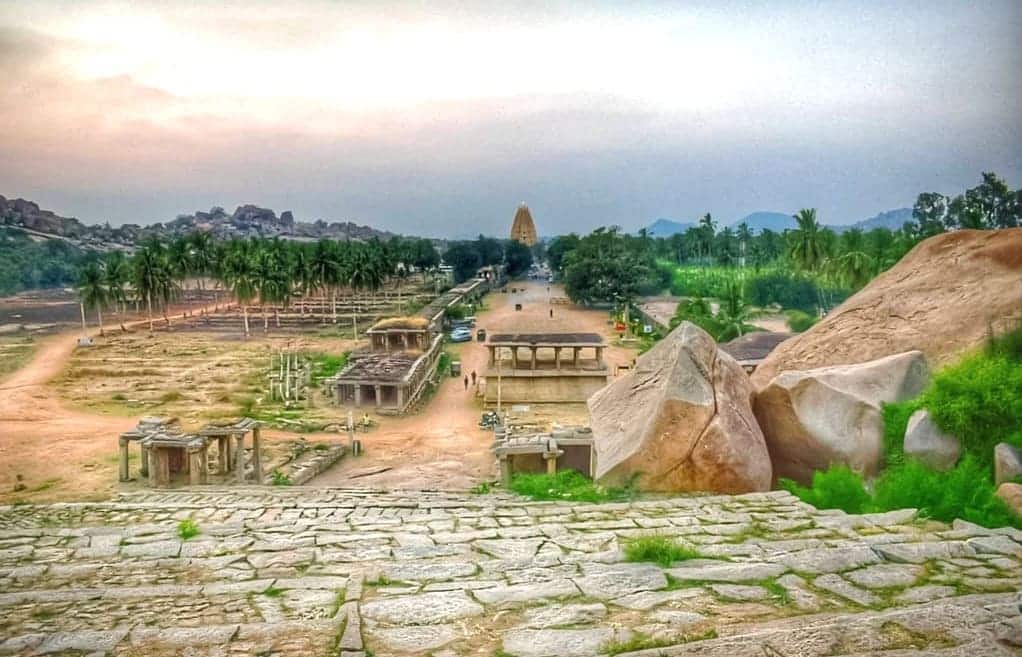
References:-
References from the Following Sources;